Speed 5.5 knots (kts) Course 137° Location Northeastern Canada Basin, 81.10° N., 120.09 W. Depth 2945 meters
SPECIAL FEATURE DISCUSSION:
(see previous journal for the questions.)
By retrieving the topmost layers, a box core sample gives us information about the most recent events on the sea floor. (According to the law of superposition, younger layers are deposited on top of older layers.)
A dredge should be dragged up slope. This way the dredge will stay in contact with the sea floor. If it is moving down slope or along an undulating slope it can be pulled off the sea floor and into the water.
TODAY'S JOURNAL:
I like to do a lot of my journaling and photo/video editing up on the bridge. It has a great view of the ship's surroundings, I can hear radio communications between the Healy, the Louis, and/or the Helicopter, and if a Marine Mammal Observer finds something cool I'm there to see it. Another unexpected bonus is the occasional atmospheric optical phenomenon.
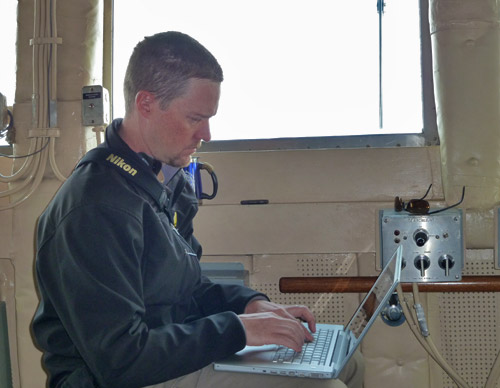
The frequent persistent fog conditions sometimes create interesting effects. At times we only see half of the Louis, and sometimes it looks like a ghost ship in the ice. At edges of the fog we sometimes see 'fog-bows.' The sun has to be low in the sky to the viewer's back, shining into a nearby fog bank, to see this wonder.
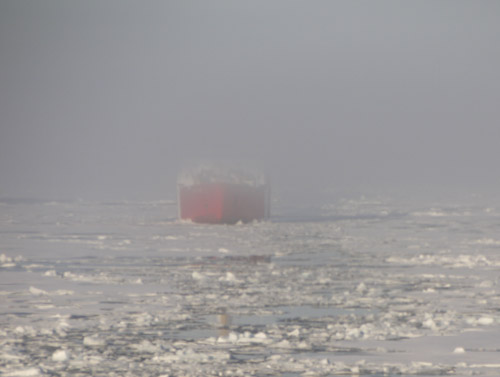
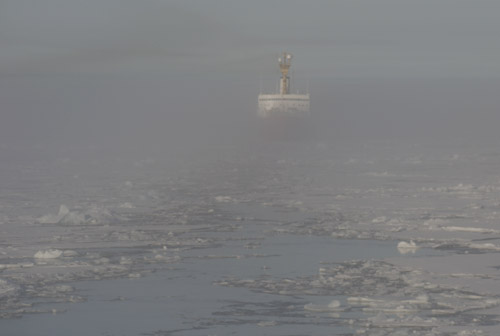
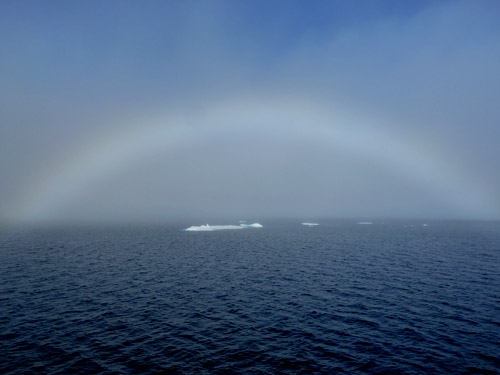
The sky can also tell a tale of what lies ahead if cloud conditions are right. Open water, a relatively dark surface, doesn't reflect much sunlight and so clouds over it look dark. This is known as a water sky. Oppositely, patches of ice in open water reflect a lot more light skyward and can light up clouds above it. This is known as an ice blink. Prior to radar or helicopter reconnaissance, mariners could get a hint of what lay ahead by paying attention to such hints.
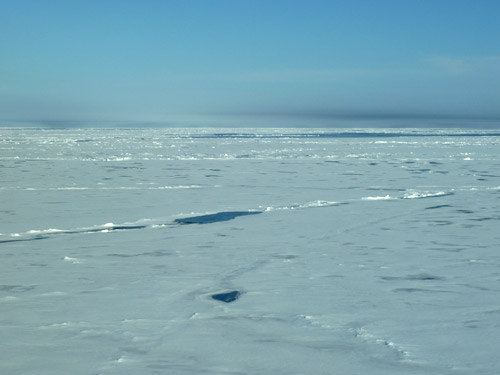
When sunlight passes through ice crystals in cirrus clouds it can be refracted into a mini spectrum on one or both sides of the sun. These are known as sun dogs. In Colorado we are only likely to see these in the winter when icy cirrus clouds and low sun angles are more predominant.
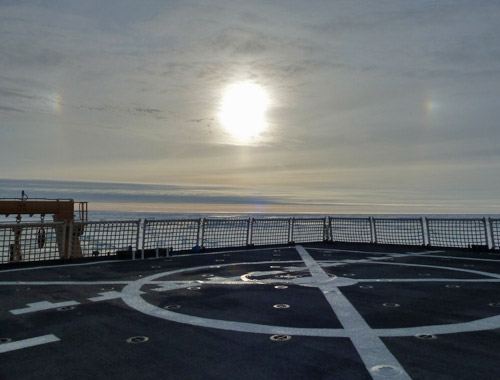
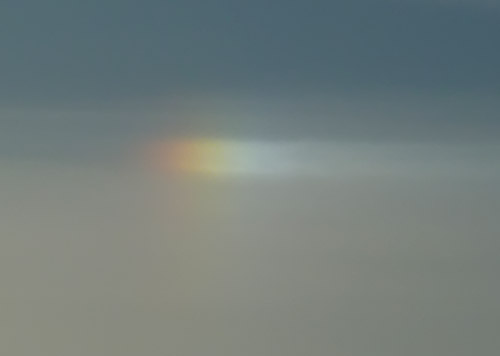
I've also witnessed two cool mirage types. According to The American Practical Navigator (Bowdich, 2002), a mirage is 'an optical phenomenon in which objects appear distorted, displaced (raised or lowered), magnified, multiplied, or inverted due to varying atmospheric refraction which occurs when a layer of air near the Earth's surface differs greatly in density from surrounding air.' One mirage I saw appeared to be tall, skinny pillars of ice at the horizon. These were normal ice blocks whose shape was distorted upward. This is an example of a towering mirage. At nearly the same time, lines of distant ice appeared above the horizon with blue sky underneath them. This is known as a superior mirage, which also inverts the image. Chief Scientist Brian Edwards told me he has seen superior mirages of ships which appear to be floating upside-down over the horizon. Both towering and superior mirages are caused when a layer of more dense air collects at the Earth's surface. One way to make air more dense is by cooling it, and so the Arctic is particularly known for producing these types of effects. You have probably seen the opposite on a hot summer day when what looks like a pool of water appears in the distance on hot roads. That is a mirage of the sky that appears below the horizon (thus, an inferior mirage) caused by air of lower density (in this example, hotter) collecting near the ground.
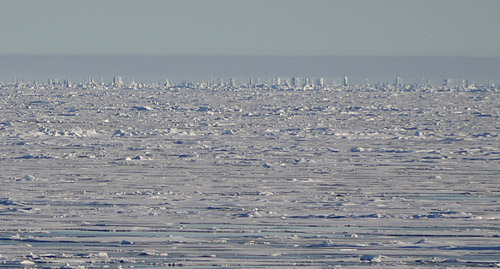
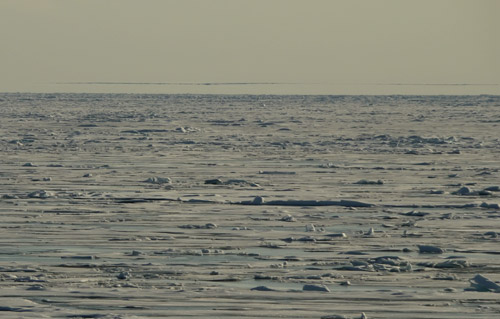
SPECIAL FEATURE:
Why are you only likely to see Arctic sun dogs in the summer?
Would you be more likely to see mirages on calm days or on windy days? Why??
That's all for now! Best- Bill


Comments